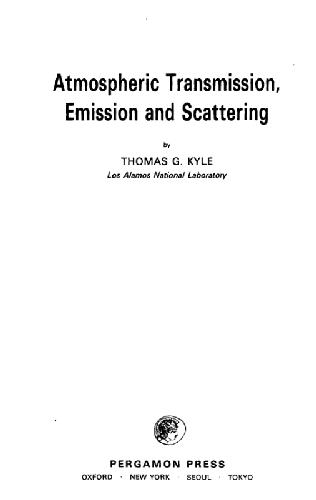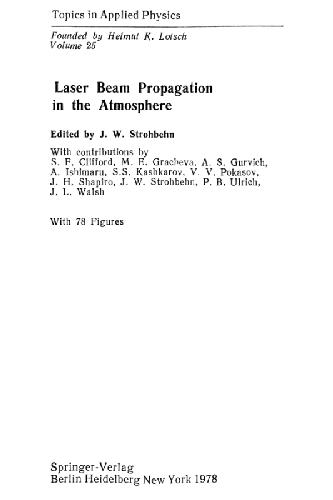Catherine Gautier9780521882613, 0521882613, 9780521709194, 0521709199
Table of contents :
Cover……Page 1
Half-title……Page 3
Title……Page 5
Copyright……Page 6
Dedication……Page 7
Contents……Page 9
Foreword……Page 19
Introduction……Page 25
Oil, Water, Climate, and Population: An Interactive System of Immense Complexity……Page 28
Role of Population and Economic Development in Oil and Water Use……Page 29
Effects of Energy Demand and Use on Global Warming……Page 30
Exhaustion of Easily Accessible Resources……Page 31
Value of Efficiency Improvement……Page 32
Poor Management of Oil and Water Resources……Page 33
Urgency and Window of Opportunity……Page 34
Major Differences in Oil and Water Resources Issues……Page 35
Strong Leadership Needed……Page 36
Introduction……Page 38
Carbon Dioxide Emissions……Page 39
Increasing Carbon Dioxide Concentration in the Atmosphere due to Human Activities……Page 40
Relationship between Past CO2 Concentration and Temperature……Page 43
Temperature: Observations and Proxy Data……Page 44
Earth Radiation Budget and Temperature……Page 46
Feedbacks……Page 48
Role of the Ocean on Climate……Page 50
Deep Ocean Circulation and Climate……Page 51
Snow, Ice Extent, Oceanic Heat Content, and Sea Level……Page 52
Impact on Water Cycle, Precipitation, El Nino, and Winds……Page 54
Future Climate: Climate Models……Page 55
Predicted Impacts on Water Resources……Page 57
Conclusion……Page 59
Introduction……Page 60
Current Population Projections and Characteristics of Future Population……Page 61
Factors Influencing Population Predictions……Page 64
Fertility……Page 66
Mortality……Page 67
Demographic Transition Model……Page 68
Uncertainty of Demographic Projections……Page 69
Population Concentration in Urban Areas……Page 70
Population Concentration in Coastal Regions……Page 71
An Aging Population……Page 74
Population, Water, and Climate Change……Page 75
Population Growth, Resources Use, and Vulnerability to Climate Change……Page 76
Per Capita Emissions Trends……Page 77
Other Human Impacts on the Global Carbon Balance and Greenhouse Gases……Page 79
‘‘Climate Refugees”……Page 80
Conclusion……Page 81
Introduction……Page 83
Carbon and the Carbon Cycle……Page 84
Exchange between Rocks and the Atmosphere……Page 89
Biotic Fluxes: Photosynthesis and Respiration……Page 90
Phytoplankton Photosynthesis……Page 91
Land as a Carbon Sink……Page 94
The Ocean as a Carbon Sink……Page 96
Partitioning Carbon Sinks between Land and Ocean……Page 97
Land- Use Change: Deforestation and Agricultural Practices……Page 98
CO2 Fertilization and Nutrient Deposition……Page 99
Fires……Page 101
Coupling between the Carbon Cycle and Climate: Carbon-Climate Feedback……Page 102
Conclusion……Page 103
Introduction……Page 105
The Concept of Peak Oil……Page 106
Conventional and Unconventional Oil……Page 108
Reserves……Page 109
Why Production and Reserve Estimates Differ……Page 111
Consumption……Page 112
Estimating Peak Oil……Page 114
Energy Consumption Needed for Oil Production……Page 117
Oil Production and Greenhouse Gas Emissions……Page 118
Peak Oil and Energy Policy Choices……Page 119
Peak Oil and Market Economies……Page 120
Peak Oil and Climate……Page 121
Conclusion……Page 123
Introduction……Page 124
Present and Future Global Oil Consumption……Page 125
Oil Consumption by the Transportation Sector……Page 127
CO2 Emissions by the Transportation Sector……Page 128
Gasoline Consumption Standards……Page 129
Crude Oil and Gasoline Prices……Page 133
Private Car Ownership Trends……Page 135
Distillates and Oil Use by Other Transportation Vehicles……Page 137
Raising Fuel Economy Standards……Page 138
Establishing Environmental Regulations……Page 139
Establishing Tradable Fuel Economy Credits……Page 140
Reducing Traffic Congestion and Average Annual Mileage Driven……Page 141
The Case of Air Transportation……Page 142
Marine Transportation……Page 143
The Role of the Public: Influence of Personal Behavior……Page 144
Conclusion……Page 145
Oil Consumption, Economics, and Politics……Page 147
Oil Prices and Financial Markets……Page 151
Petroleum-Rich Economies……Page 154
Oil Security……Page 157
China’s Geopolitical Outlook Regarding Oil……Page 158
Impact of Climate on Oil Production and Price……Page 159
Conclusion……Page 161
Introduction……Page 162
Coal……Page 164
Natural Gas……Page 167
Nuclear Energy……Page 171
Wind Energy……Page 175
Solar Energy……Page 178
Hydrogen Cells……Page 179
Hydroelectric Power……Page 183
Biomass: Ethanol……Page 184
Geothermal Energy……Page 186
Conclusion……Page 188
Introduction……Page 192
Water Cycle and the Water Budget……Page 193
Evaporation, Condensation, and Precipitation……Page 194
Land Surface Hydrology……Page 199
Clouds and Climate……Page 201
Precipitation and Climate……Page 202
Snow/Ice and Climate……Page 204
Predictive Abilities of Climate Models……Page 205
Changes in Water Vapor and Clouds……Page 206
Evaporation……Page 207
Changes in the Land Water Budget……Page 209
Conclusion……Page 210
Introduction……Page 211
The Water-Sanitation Gap……Page 213
The Future of Sanitation……Page 215
Cities and Water……Page 216
Irrigation Needs……Page 218
Future of Irrigation: Where Will the Water Come From?……Page 220
Ecosystem Needs……Page 222
Overview and Definition……Page 223
Energy Needs for Irrigation and Crops Water Delivery……Page 224
Water for Energy Generation……Page 225
Managing Water in a Changing Climate……Page 226
Water Needs of Alternative Energy Sources……Page 227
Conclusion……Page 228
Surface Water……Page 229
Rivers and Streams……Page 230
Lakes……Page 232
Wetlands……Page 233
Groundwater……Page 234
Ecosystem Functions……Page 235
Human Pressures on Ecosystems……Page 236
Major Functions of Dams……Page 237
Environmental Effects of Dams……Page 238
Dam Silting……Page 240
Dams and Greenhouse Gas Emissions……Page 241
Potential Effects of Global Warming on Dams, Rivers, and Lakes……Page 242
Conclusion……Page 245
Introduction……Page 246
Water Contaminants……Page 247
Fertilizer Contamination……Page 250
Livestock Pollution……Page 253
Industrial Contamination……Page 254
Deposition from the Atmosphere……Page 255
Infiltration Contamination……Page 256
Urban Water Contamination and Water Cycle Modification……Page 259
Water Resources Management……Page 261
Wastewater Treatment……Page 262
Changes in Precipitation Patterns and Water Contamination……Page 266
Conclusion……Page 267
Introduction……Page 269
Definition of Water Rights……Page 270
Hydrological Interdependence……Page 272
Transboundary Water Governance Challenges……Page 273
Water Allocation……Page 274
International Water Laws……Page 275
Roots and Types of Water Conflicts……Page 276
Potential for Cooperation around Water Resources……Page 277
Public Finance, Access, and Price……Page 279
Women and Water……Page 281
UN Millennium Development Goals, Millennium Project and Water, and Others……Page 282
World Water Forum……Page 283
Opposition to Huge Dams……Page 284
Privatization of Water and Water Systems……Page 285
Water Value, Price, and Cost……Page 287
Water Security……Page 289
Water as a Human Right……Page 290
Water Rights and Climate Change……Page 291
Conclusion……Page 292
Introduction……Page 294
Water Conservation and Efficiency……Page 295
Water Distribution Infrastructure Maintenance, Repair, and Replacement……Page 296
Raising Irrigation Water Efficiency and Productivity……Page 297
Rainwater Harvesting……Page 298
Technological Solutions……Page 300
Water Trading……Page 301
Land-Use Change for Increased Rainfed Agriculture……Page 305
Desalination Process and Technology……Page 306
Energy Needs of Desalination……Page 307
Environmental Impacts and Health Risks……Page 308
Conclusion……Page 310
Introduction……Page 312
Global Temperature Changes……Page 313
Polar Amplification of Anthropogenic Warming……Page 314
Hurricanes……Page 315
Storage of Heat in the Oceans……Page 316
Changes in Sea Level……Page 317
Forcings……Page 318
Climate Sensitivity……Page 320
Tools……Page 322
Predicted Changes under Various Scenarios……Page 324
Natural Variability and Anthropogenic Effects……Page 326
Climate Oscillations……Page 327
Monsoons……Page 330
Abrupt Climate Change……Page 331
Conclusion……Page 332
Introduction……Page 334
Population……Page 336
Water……Page 337
Energy and Climate……Page 338
Water……Page 340
Natural Gas……Page 341
Improved Water Management……Page 342
Addressing Urbanization Issues……Page 343
Efficiency and Conservation……Page 344
Irrigation Water Savings……Page 345
Adaptation to Change……Page 346
Technology Breakthroughs and Research and Development (R& D) Programs……Page 347
Assigning a Cost to Water……Page 348
Environmental Ethics……Page 349
Sustainability……Page 350
Intergenerational Equity……Page 351
Empowerment and Education in Support of Poverty Eradication……Page 353
The Security Issue……Page 354
Leadership and Behavior Changes……Page 355
Final Thoughts……Page 359
References……Page 361
Index……Page 369







Reviews
There are no reviews yet.